12 start with O start with O
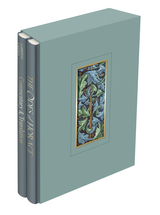

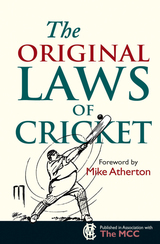
This series of books from the Bodleian Library reproduces the original rules of classic sports, complete with commentary about their historical evolution and adaptation—in attractive, collectible formats. They are informative and often witty companions to the world of sport, bringing the past and present together.
Of all the rules governing sports, the laws of cricket are among the oldest. The first written rules of 1744 survive solely on the border of a piece of linen at the Museum of The Marylebone Cricket Club, the home of cricket. The Original Laws of Cricket reprints the complete text of this original and explores how these early laws shaped the development of the game and in turn how the social dimensions of the game changed the laws.

More than 25 million people in the United States alone play golf each year. A game born on the stark, wind-swept landscape of Scotland in the fifteenth century, golf has grown over the centuries into a global phenomenon. It is a sport not only enjoyed by professionals and the spectators of international tournaments, but one enthusiastically enjoyed by amateurs everywhere who socialize with friends and colleagues on their local courses. Yet despite golf’s widespread popularity, few of us truly know its rules, which have grown more complicated and confounding as the game has grown in popularity. Extremely simple by comparison, the very first rules of the game are presented here in a charming, collectible format.
The first known rules of golf were drawn up in 1744 in Edinburgh for the world’s first open golf competition, hosted by the Gentleman Golfers of Edinburgh, who later became the Honourable Company of Edinburgh Golfers. Local golf clubs then adapted the Edinburgh rules for their own use—until 1897 when the Royal and Ancient Golf Club of St. Andrews assumed oversight of the rules, and published the first national set of golf rules. The original Edinburgh and St. Andrews rules are both reprinted here alongside delightful images of the game throughout the centuries. In addition, well-known golf writer Dale Concannon provides a thorough introduction that examines the history of the rules of golf from their first codification in Edinburgh to the present day.
A must-have for anyone who delights in the spirit of the game, The Original Rules of Golf will find fans among golfers and armchair spectators everywhere.
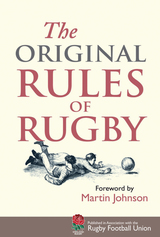
Rugby has rules, seriously? Believe it or not, it does. The Original Rules of Rugby brings together the original rules of the game drawn up at Rugby School in 1845 and the first rules of the Rugby Football Union in 1871. The book shows the complex evolution of rugby football and the intriguing history behind its shifting rules.
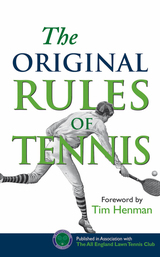
The pristine grass and white uniforms of Wimbledon and the aggressive hard courts of the U.S. Open have inspired tens of thousands of amateur tennis players in North America. Millions of people watch the tournaments each year on television and the stars of recent decades are household names, but relatively few people know the history of the game. In the Middle Ages and the Renaissance it was a “jeu de paume,” a game played at French and English royal courts with hands rather than rackets. The modern game, however, dates from 1874, when Major Walter Clopton Wingfield developed a variation on the game for the amusement of his house guests in Wales. After he laid out the basic rules, the game spread quickly—the first championship at Wimbledon was held in 1877, followed soon after by the first American tournament in 1880.
Published in association with the All England Lawn Tennis Club—better known as Wimbledon—this attractive, collectible book examines the history of the rules of tennis from their first codification to the present day. Included is a fascinating introduction by John Barrett, the BBC’s now retired “voice of tennis” who played in twenty-one consecutive Wimbledon Championships, that looks at the circumstances of the composition of the first rules, their scope, and evolution. The Original Rules of Tennis is a must for spectators and players alike.
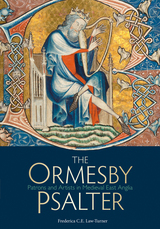
Housed in Oxford’s Bodleian Library for over 150 years, this enigmatic masterpiece is perhaps the most magnificent yet enigmatic of the great Gothic psalters produced in East Anglia in the first half of the fourteenth century. Manuscript expert Frederica C. E. Law-Turner places the psalter within a wider historical context and then deciphers its lush illuminations—scenes that vary wildly in tone from the comic to the bawdy to the mythic. Full-color photographs illustrate the text’s many characters: falcons and hunting dogs at bay, kings and courtesans, and other animals dressed in human garb. Created over a period of decades by previously unrecognized scribes and artists, the Ormesby Psalter is an exceptional amalgam of medieval art and history. For scholars of medieval life, as well as art historians, this new study will be an invaluable resource.
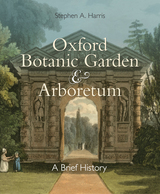
This book tells the story of the garden through accounts of each of its keepers, tracing their work and priorities, from its founding keeper, Jacob Bobart, through to the early nineteenth-century partnership of gardener William Baxter and academic Charles Daubeny, who together gave the garden its greenhouse and ponds and helped ensure its survival to the present. Richly illustrated, this book offers a wonderful introduction to a celebrated Oxford site.

This guide explores Oxford Botanic Garden’s many historic and innovative features, from the walled garden to the waterlily pool, the greenhouses, the rock garden, the water garden and “Lyra’s bench,” made famous in Philip Pullman’s beloved His Dark Materials series. It also gives a detailed explanation of the Garden’s medicinal and taxonomic beds and special plant collections. Lavishly illustrated with specially-commissioned photographs, this book not only provides a fascinating historical overview but also offers a practical guide to Oxford Botanic Garden and its work today. Featuring a map of the site and a historic timeline, this book is a beautiful souvenir of the birthplace of botanical science in the UK.


With Oxford in Prints, Peter Whitfield has assembled a rich selection of more than seventy illustrations and prints that offer a portrait of Oxford before it became the modern city it is today. Seventeenth-century prints by David Loggan show the medieval origins of Oxford University already overlaid by Tudor and Stuart buildings. Eighteenth-century editions of the Oxford Almanack depict a city dominated by neoclassical ideas. By the nineteenth-century, illustrations in the Almanack had an increasingly romantic feel, with buildings against a natural background of the river, trees, and sky. Each illustration or print is accompanied by an insightful description, including salient historical features.
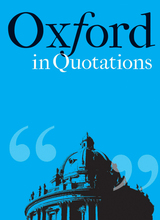
Oxford, “City of Dreaming Spires,” earns high marks from Hillaire Belloc, who writes that “there are few greater temptations on earth than to stay permanently at Oxford . . . and to read all the books in the Bodleian.” But it is also, according to Anthony Trollope, “the most dangerous place to which a young man can be sent.” And none other than Max Beerbohm blames it for making him insufferable.
For fans, foes, and those planning a trip to the city in the hopes of forming an opinion, this collection will be welcomed.
READERS
Browse our collection.
PUBLISHERS
See BiblioVault's publisher services.
STUDENT SERVICES
Files for college accessibility offices.
UChicago Accessibility Resources
home | accessibility | search | about | contact us
BiblioVault ® 2001 - 2024
The University of Chicago Press









